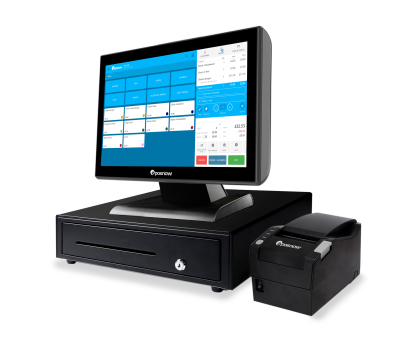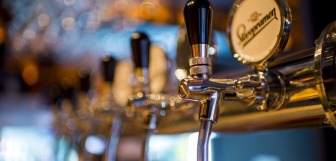Bar Pricing: A Complete Guide to Pricing Drinks
It's a fact of life that the majority of businesses in the hospitality industry operate on razor-thin profit margins. When you take a moment to think about how much work goes into putting an order in front of a customer (suppliers, chefs, and servers all play a part), it's easy to see how costs can quickly add up.
Bars, particularly bars that focus entirely on drinks, occupy an interesting space in the hospitality industry ecosystem. Drinks have a much bigger profit margin compared to food and good bar owners can very easily maximize profits.
There is a fine line to walk when pricing liquor costs. Good bar managers need to ensure that they're delivering profits to the business while also offering customers good value for their money.
In this blog, we'll be taking an in-depth look at a pricing strategy you could implement at your own bar and how you can price drinks in ways that serve the business and the customers.
Best practices for pricing liquor
If you're the bar manager at a bar or restaurant, you generally need to be considerate of three things when developing your pricing strategy. These things are:
The item
This refers to the actual item being sold. It goes without saying that different brands and different types of liquor have different prices. For instance, a name-brand bottled beer will generally cost less than a double of name-brand spirit.
Think about your stock and the crowd you're trying to attract. Potential customers are usually willing to pay more for quality brands that they already know. The highest quality bottles of beer and spirits are also bought as status symbols by your customers so you'd be justified in charging more.
Competition
Nearly every town and city in the world will have a multitude of bars all competing for attention and customers. These bars are likely to vary from dingy dives to sophisticated cocktail bars. Each will have priced drinks to reflect their business and the audience they serve.
When you're setting your own drink prices, you should take the time to visit your competitors and see how they do business. Take note of the clientele, what they seem to be drinking, and their drink prices. If you can budget it correctly, it never hurts to offer the same liquor quality at a lower price.
Demand
The demand for alcohol in your town or city will also affect your drink prices. If there is a high demand for liquor in your area, you can afford to increase drink prices. If the demand is low, you'll quickly find that expensive drinks simply won't sell.
Your liquor prices should reflect the customer demand for alcohol in your area. If demand is low, it would serve your business better to offer drinks for just over retail price and perhaps focus on food sales. Conversely, if there is a high demand for alcohol sales, you can offer higher-priced drinks.
Understanding liquor cost and pour cost
Most bars, when setting menu prices, will generally use "pour cost" to work out how much they should charge per drink. Pour cost, sometimes called liquor cost, refers to how much a drink costs to make compared to its menu pricing. In
Generally, your target pour cost should be around 15-20%. If a drink has a pour cost of 20%, it will have a profit margin of 80%. In short, a lower pour cost raises your profit margin.
For inexperienced bar or restaurant managers, it can be difficult to get the pour cost right. There are a number of different factors to consider that effect pour cost including staff salary, liquor costs, ingredient cost, customer demand, and the time it takes to make the drink.
Much in the same way that you check your business reports, you should spend a good amount of time perfecting your pour costs. If your bar or restaurant has an issue with inefficiency, being strict about pour cost can go a long way to getting it under control.

Gain all the advantages of a POS system with detailed, flexible, downloadable reports, and so much more:
- Manage and update products quickly with easy-to-use software
- Expand your business into multiple channels and integrate with a variety of online platforms
- Manage multiple locations and salespoints with multi-site management
- Keep queues short with streamlined, modifiable sales processes
- Choose a setup that suits you with software and hardware options
How to work out drink prices for different types of alcohol
As a bar or restaurant owner, your mind should always be on two things. Serving drinks to your customers and improving your profit margin. While food can be profitable, alcohol sales are where the real money is.
As we mentioned above, the average bar or restaurant will serve a variety of different drinks and each will have its own pour cost. Pricing wine bottles is a whole different ball game to pricing cocktails and bottled beer. Below, we've included some tips that will help you calculate costs for your drink prices.
Pricing wine
Wine is generally priced in two ways: by the glass and by the bottle. The reason for this is that wine, much like spirits, has a higher alcohol percentage than beer. Wine by the glass is more expensive, per glass, than the bottle. This is because wine quickly degrades once open and could be a source of wasted money if not managed correctly.
In terms of pour cost, wine is one of the best drinks you can offer. Unless you're operating a wine bar, you'll most likely get your wine from a wholesaler. This wholesaler wine usually costs between $10-15 dollars a bottle. You can reasonably sell this same wine for $30-$40 a bottle and $8-10 per glass.
Pricing cocktails
Cocktails stand apart from wine and beer in that one drink can contain a variety of ingredients. Pour cost analysis is particularly important when you price cocktails as all the different elements of the drink can quickly add up.
When you sit down to write your cocktail menu, ensure you're choosing drinks that are popular and easy to make. Spirits, the primary source of alcohol in a cocktail, is usually priced per ounce so make sure you take that into account. Like wine, spirits have a much lower wholesale price compared to their retail price, so you should be able to give your profit margin a bit of wiggle room.
Pricing beer
Much like wine, there are two types of beer sold in bars: bottled beer and draught beer. When pricing beer, think about it as you would wine. Bottles of beer are easy to store, are relatively inexpensive, and easy to serve. Draught beer has higher overhead costs as it requires you to maintain kegs and pipes. This means that draught beer has a higher pour cost than bottled beer.
Taking the above into account, you should be charging more for draught beer than you do for bottled. Of course, if the bottled beer is a specialty brand or special in some sort of way, you should charge more for it.
Price drinks perfectly with Epos Now POS
Managing all your drinks and pricing them correctly can take a long time. With the Epos Now Complete Solution, your point of sale (POS) system can handle it all for you. Price and re-price drinks in seconds, take customer orders, and get helpful business reports all from one place.
If you'd like to hear more about Epos Now, get in touch with our expert team below.
